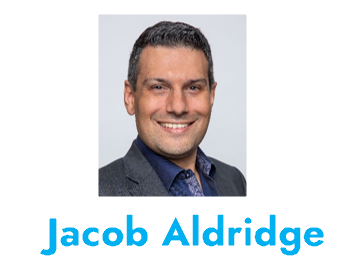Double Your Conversion Rates in Sales Meetings. In Blackboard Fridays Episode 40, Jacob talks about Sales. Need this implemented into your business? Talk to the international business advisor who can do exactly that – Contact Jacob, Learn More, or Subscribe for Updates.
Your ‘fair share’ of sales is probably around 30%. In other words, even a mediocre salesperson would be expected to win 1 out of every 3 engaged prospects they present to (and as we discussed in Blackboard Fridays Episode 11, on average it takes 3 leads to create each one of those engaged prospects).
What if instead of 1 in 3, you could win 2 out of every 3 sales? What impact would that have on your business?
I’ll tell you – it would either mean a lot more revenue, or a lot more time since you wouldn’t have to have so many sales meetings…or both!
More money and more time? This week’s episode sounds like the holy grail, so what are we discussing?
Let me introduce the Gratitude Sales Model, the framework I use to win far more than my fair share of sales. This is not about scripting, or handling objections, this is having a consistent approach to your sales meetings that takes your client on the energetic journey through which they make a buying decision.
It starts with your energy – coming from a place of Gratitude – and by the time you’ve said ‘Thank You’ three times you will have moved through the six conversations necessary to convert.
It takes just 5 minutes to learn, and a lifetime of application to master … so take the 5 minutes to watch this episode right now, and begin applying this immediately.
Who is Jacob Aldridge, Business Coach?
“The smart and quirky advisor who gets sh!t done in business.” Back independent since 2019.
Since April 2006, I’ve been an international business advisor providing bespoke solutions for privately-owned businesses with 12-96 employees.
At this stage you have proven your business model, but you’re struggling to turn aspirations into day-to-day reality. You are still responsible for all 28 areas of your business, but you don’t have the time or budget to hire 28 different experts.
You need 1 person you can trust who can show you how everything in your business is connected, and which areas to prioritise first.
That’s me.
Learn more here. Or Let’s chat.
Transcript
Way back in episode 11 of Blackboard Fridays we talked about your sales hourglass. The journey from prospect to becoming your client, and the speed and volume at which people move through that journey.
Today we’re going to focus on one specific but very important part of that—how do you in a sales meeting situation convert a prospect from a proposal to winning them as a client. This is the framework that I use to increase conversion rates with my clients and for myself and my business.
On average, a salesperson wins about 30% of those live proposals that they get a chance to pitch for. One and three, that’s your fair share and yet I’m finding for myself and my clients we’re often winning two and three, and in some cases eight or nine out of ten in those opportunities just by following this simple framework.
Now the key to this is understanding, it is not a prescriptive agenda for your sales meetings. It is an energetic series of conversations you need to have and when you have each of these conversations, possibly in this order or possibly not, you will find that your conversion rate will go through the roof. So, let’s walk through them. It starts at the very top with the name. This is the gratitude sales model, and we do that for two reasons.
One is to anchor in for yourself that you are coming into every sales conversation from a position of gratitude. Yes, you are absolutely delivering value in the relationship you are worth it, and your confidence is a critical factor in winning that work. You need to respect the client and be forever grateful that they are entrusting their business, their needs to you.
Sitting in that space can sometimes dramatically change the conversation and mean right from the moment you walk in the door, you have a leg up over your competitors.
The second reason I remind you to say thank you is that that’s a nice little thank you, and you see the tea and the wire repeated throughout, it’s a nice little mnemonic device to help you remember these six conversations. So, let’s walk through them.
Ideally, you do go through them in this order That’s the most powerful but as I say sometimes the clients take you off track in a sales meeting and you need to loop back to cover them off.
The very first and the T is about the—their agenda. You will walk into a sales meeting with your agenda but the first thing you want to do is find out what their agenda is. Are they here simply to find out how they can engage? Can we jump straight to the end of the conversation and just start booking in dates or do they have a whole range of questions?
I’d encourage you to watch our momentum meeting model video to understand how to set some better agendas.
Once you’re clear on their agenda, you shift into the next conversation. I like to say, when you shift between these boxes, say ‘Thank you. Thank you for sharing that agenda with me.
Now, before we jump into that, can I just ask what you know about me and my business?’ So, this shifts from them to you and specifically your brand promise. What you want to be hearing at this point in the sales meeting is whether that prospect you’re sitting in front of has a strong idea of you and the value that you bring. Because if they don’t, they’re woefully misinformed, you want to correct that upfront and not way down here at the bottom.
This does give you a chance if they have no idea to roll out your brand promise and again, I’d encourage you to watch episode 27 of blackboard Friday’s where we go through how to create a consistent brand promise.
This is not a chance to spend 15 minutes talking about yourself. This is your 90 second elevator pitch of a positioning statement to just confirm exactly what it is that you do and how that brings value that sets a context then for diving into the conversation.
Enough about you, ‘Thank you for letting me clarify that, now let’s talk about you.’ Back to them, back to the prospect and what you’re really wanting to understand here is what’s motivating them. What’s driving them? What is their need in this transaction? If they don’t have a need, it will be much harder to sell.
Sometimes they don’t even know what need they have, and this can form the bulk of the time in your sales meeting, really going to depth, building the relationship, and understanding them. I still see too many salespeople, great business owners with a great product and service to sell, jumping very much into their own solution and what they feel, or they think the client needs.
Spend more time talking about them and when you do make that transition back to your solution, you’ll need far less time because you’ll be able to anchor that into their specific motivation.
Create the space. Listen. ‘Thank you for sharing all of that, here’s how I feel we can help.’ Understand their motivation and connect your solution with that.
Once you’ve done that, shut up. Now that can feel a little bit awkward for you when you’re sitting in a situation where you’re not talking but understand your client needs time to catch up. They’ve just shared a heap of things with you, maybe some of that that they haven’t shared with anybody else or anybody else recently.
You’ve proposed a solution to them, and they’re needing time to connect those dots. Your pause here gives them the respect that they are due to help connect those dots that you made because you’re an expert in this field.
Once they’ve done that once they’ve connected those they’ve caught up to the conversation, then their brain and their body will start to decide. That decision will push them in one of two directions, they will either start coming back with objections or concerns or other questions because you’ve missed something. That’s okay.
Go back understand them more, discuss your solution again, shut up again. But ideally at this point they decide. They feel that you have given them a solution that nobody else has proposed and that nobody else can deliver.
So, we go back to them, and their questions are now going to be forward-looking questions. How much does this cost? What’s the process? How quickly can we make this happen?
Those are excellent questions for you to be able to answer to get that commitment, to get that connection with the client, and wherever possible get them in the diary and sold in this sales meeting. Because once you’ve answered those questions, once you’ve confirmed that they are willing to buy, the last step is as simple as you are closing the meeting.
Your responsibility in this the final box, the final conversation in the gratitude sales meeting model is to come all the energy. No matter how excited they may be, or confident, or impassioned, or emotional about the purchase that they’re making, your responsibility is to come all that energy down so that when they walk out of that meeting, they walk out feeling connected with the decision. They don’t walk out on a high because that means they will crash, and if they crash, they may change their mind.
Similarly, you really don’t want them walking out in that emotional state you may have taken them in to. Bring that back to calm, and once you do, your job is done wrap things up, don’t do the small talk, get out of that meeting, go and put them in the diary and start delivering the solution that you proposed.
Yes, I say can take about an hour to learn. I think we’re about five or six minutes into a video and you’ve got the gist of it, but it takes a lifetime to master.
I would encourage you to draw that down, take a picture of it or send me an email, and I can send you a diagram that you can use as a reminder both before and after your sales meetings. Before to remind yourself to go in with a space of gratitude and have these conversations, and afterwards to reflect on what you did well and what you might do differently in the future.
Practice with an excellent model makes for excellent solutions moving forward. If your conversion rates are hovering around about that one in three, that 30% that is average, then you ought to be motivated to do better to get that to 40, 50, 60 % or more. I hope through this and future conversations you find the gratitude sales meeting model to be the solution you need.
Next Steps
Want to learn more about how this can apply to your business? It costs nothing to chat:
- Email me jacob@jacobaldridge.com (I read them all)
- Call, Text, or WhatsApp me +61 427 151 181
- Or just Subscribe https://jacobaldridge.com/about/subscribe-to-jacob-aldridge-com/ to stay in touch





[…] we talked about the Gratitude Sales Model and how it massively improves conversion rates. In this week’s episode, I’m going to […]